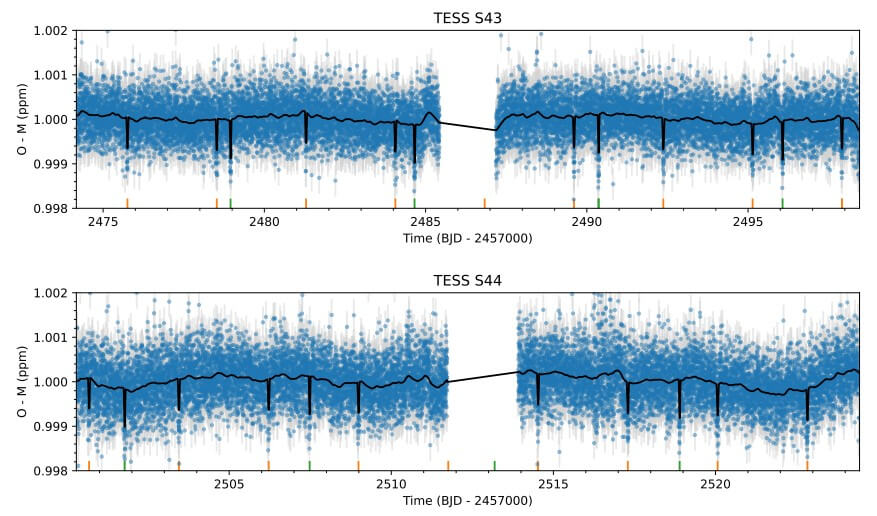A team of astronomers led by Rafael Luque from the University of Chicago studied the transit signals
According to the researchers, transit observationswith TESS found two minor planet candidates, which were confirmed by independent radial velocity data from the HIRES and CARMENES instruments obtained in 1998 and 2016, respectively.
The star HD 260655 is located nearsolar system, at a distance of about 32.6 light years from Earth. It is about 56% smaller and lighter than the Sun. And the age of this star is from two to eight billion years.
closest exoplanet to parent starreceived the designation HD 260655 b. The radius of this planet is about a quarter larger than the radius of the Earth, while it is 2.14 times heavier than our planet. The researchers note that the “year” on this planet is 2.77 Earth days, and the distance from the star to HD 260655 b is 0.03 AU. This is about 10 times smaller than the orbit of Mercury.
The second planet, HD 260655 c, is larger and more massive.It is approximately 1.5 times the size of the Earth and weighs 3 times more. This planet orbits at a distance of 0.047 AU. and completes a full circle in 5.7 Earth days.
 Transit observations by the TESS satellite. The orange marks correspond to the passage HD 260655 b, the green marks HD to 260655 c. Source: R. Luque et al., arXiv
Transit observations by the TESS satellite. The orange marks correspond to the passage HD 260655 b, the green marks HD to 260655 c. Source: R. Luque et al., arXiv
Researchers believe that the density of openplanets suggests that both of them have a rocky composition. At the same time, HD 260655 b is similar to the Earth, and the second, more distant planet does not contain iron inside and consists entirely of silicates.
Astronomers believe that because of the relatively high visible parent star, these two planets will be excellent targets for further atmospheric studies.
Read more:
Inexplicable duality found in elementary particle physics: what will it lead to
Look at the alignment of the planets in 2022: the brightest planets are visible in the photo from Earth
Scientists explain how a stem cell "understands" what it will become